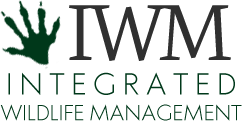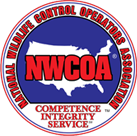OUR PROCESS
Explaining the IWM Process
Integrated Wildlife Management is our comprehensive and effective one-stop solution. This approach brings together the six necessary elements to successfully resolve wildlife / human conflicts. These steps are listed below and are then discussed in detail. You can skip to any section by clicking on the word in the list.
Inspect >>Diagnose >>Capture >>Remove >>Exclude >>Repair
INSPECT
Inspections are performed to determine what animal(s) may have invaded your site, building or home and where they are living. These invaders may have been living in your structure longer than you are aware. Occasionally a newly purchased structure comes with wildlife. Don't allow yourself to be one of the few, have an inspection completed by a certified wildlife control operator.
EXTERIOR
|
INTERIOR
Need Access in the Future? **Access panels can be installed to access the locations marked above with "**". Installation of access panels is not a part of a standard inspection. Rates to perform access panel installation will be quoted after visit and initial inspection. |
DIAGNOSE
Diagnosis works hand in hand with inspection. We are able to determine where animals get in, why they have chosen the sight, what we must do to remove them, and finally how can we stop a repeat of the problem by the same or different animal. Often, customer education is a necessary part of the solution. So often, unknown to us, we provide all the necessary ingredients as to why animals and birds have chosen this spot. These reasons include easy access to food sources (handouts and landscape produced), shelter (a great place to have a home), and safety (few natural predators).
FOOD SOURCESWe are often our own worst enemies. The kindness we extend to animals in providing food sources, often comes back to haunt us. The feeding of stray also provides a great place for skunks, raccoons, opossums, and mice to also get a meal. This enticement brings animals into extremely close proximity to our homes and in a short time those very same occasional feeders have discovered the many great places to make their home at your home or office.
|
SHELTERWe all need it, even animals. Residence, better than nature provides, is found under our decks, concrete patios, porches, sun rooms, utility sheds, crawl spaces, attics, dryer/bathroom vents, landscaping, building design, etc.SAFETYIn our neighborhoods and cities the greatest predator is often the tire of a vehicle. Though some predators have begun to identify the suburban/urban environment as a great feeding ground, it is not enough to keep the balance of nature in check. Even if this were to be achieved, predators roaming our yards and streets bring problems of its own. |
CAPTURE
Unless you have an extensive background and/or training with wildlife and are equipped with a plan for events after capture, trapping and animal removal should be left to professionals. Mishandling of an animal can be very dangerous to you and others as well as to the captured animal. Unnecessary suffering can be inflicted on animals by some of the best intentioned individuals. Please note that many of our most problematic species; skunks, squirrels, rabbits, opossums, raccoons are regulated by game law codes under furbearers and game animals. It is illegal, unless properly licensed, to be in the possession of as well as the transportation of these animals. Trapping is viewed by many as the most exciting aspect of wildlife control. With this in mind, do not lose sight of the fact that the animal in the cage is still a wild animal and can inflict severe damage on anyone who would be tempted to pet or touch the animal. Never allow anyone to put any item in a cage. Please stay back until the Wildlife Professional arrives. Not only is this the wise thing to do, it is also the best for the animal. Often individuals will comment on how aggressive the animal appears in the cage. Most likely, this is a result of that individual standing at close range to observe. Normally most animals would never allow you to approach this close. You are interpreted to be a predator which results in a self-preservation response. Avoid this temptation. View from a distance which is safe for you and the animal.
REMOVAL
Removal may occur by simply loading an animal in a trap onto the back of a pick-up truck and driving away. This is typical for ground hogs, skunks, raccoons, squirrels. Sometimes removal can be very involved requiring the use of specialty devices such as one-way doors, funnels, and specialty traps.
The specialty equipment used to exclude them is not a trap but rather a device that allows escape but no reentry. The use of these devices must be coordinated with the life cycle of the animal. For instance, excluding squirrels and bats from an attic during the spring and early summer, when young are born, may strand infants in the attic only to die. This may create an unhealthy and unpleasant condition for the occupants of the house, due to decaying animals and other associated pests.
Please be aware that some animals are required to be euthanized when trapped. The Pennsylvania Game Commission, the regulatory authority over licensed Wildlife Control Operators in Pennsylvania, requires skunks, fox, coyotes, raccoons, and ground hogs to be euthanized.
The most notable reason is that all of these animals are recognized as rabies vector species, which can carry and transmit rabies to humans. It is reasonable to assume that most do not, but it must be understood that they can and do. This is why wild animals should never be handled haphazardly.
Sometimes euthanasia is necessary because moving one animal from his familiar territory into an area unfamiliar is not biologically sound. Many studies have shown that animals either return to "home", seek out shelter in or under another building elsewhere (creating a problem for others), or die because they are unfamiliar with their new surroundings and not able to adapt.
EXCLUDE
Exclusion is the process of installing the necessary devices to keep, birds, animals, and reptiles out of certain areas. Your home may not have suffered physical damage by an animal, but creatures sometimes, will exploit an area that exists from normal construction and materials used. A common site is the space under your deck. The area was fine until skunks moved in. How could this have been prevented? Heavy screening material, which allow for continued air flow, will keep creatures out when properly installed. Dryer and exhaust vents provide perfect spots for birds to nest. With ease, many birds can flip open a vent cover or all too often, due to lint build up, the vent is already partially or totally open. This invitation to "build here" is all a bird needs. Squirrels will exploit gable vents either not or poorly screened. Mice and snakes will exploit gaps along a foundation or the corner channels of a sided house. Industrial, commercial, and retail settings often provide roosts for birds, creating an unsanitary condition for people to work. There are many simple things that homeowners and maintenance people can do to prevent animals and birds from taking advantage of openings and perches. S & S will provide the knowledge and expertise for the "do-it-yourselfer", as well as complete the work for those who would rather leave it to the "exclusion experts". A complete site inspection by S & S will provide you with the information needed to successfully prevent animals, birds, and reptiles from making your home, office, warehouse, industrial site their home.
REPAIR
Sometimes the damage is caused by animals and sometimes the damage is from some other means which the animals exploit. Either way it needs repaired. S & S brings many years of trade experience in building repair and maintenance to the job as well as skilled tradesman for a host of tasks from soffit and fascia work to electrical. masonry and carpentry. All too often repair gets little regard. The noises have stopped, the animals are gone, it can wait, you may say. Just as the other creatures showed up unexpectedly, be sure that some other suburban/urban creature will be happy to fill the vacancy just created. Often holes and gaps high on a house will be home to squirrels. Once the problem squirrels are gone others squirrels may move in as well as birds, and bats. Areas at ground level, particularly holes left by ground hogs, provide a perfect dwelling for skunks, opossums, raccoons, and stray cats. Repairs are an essential ingredient to solving the problem permanently. If your Wildlife Operator can't do the repair or recommend someone who can, call another Wildlife Operator.

Integrated Wildlife Management is our comprehensive and effective one-stop solution. This approach brings together the six necessary elements to successfully resolve wildlife / human conflicts and when possible, safely relocate wildlife to a more suitable habitat.


